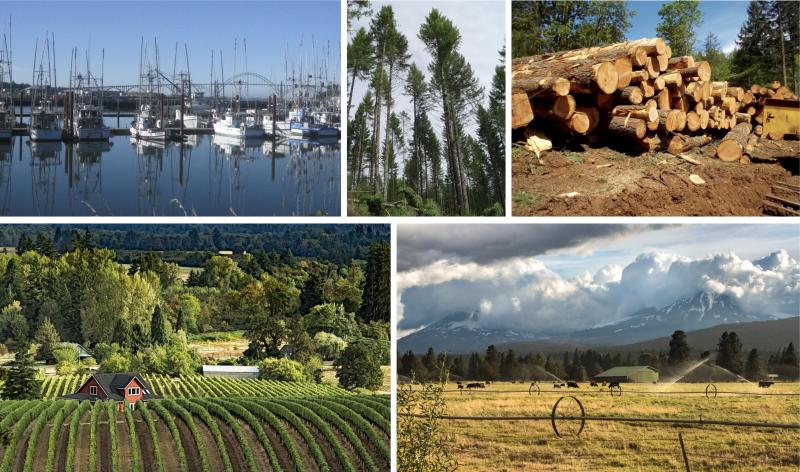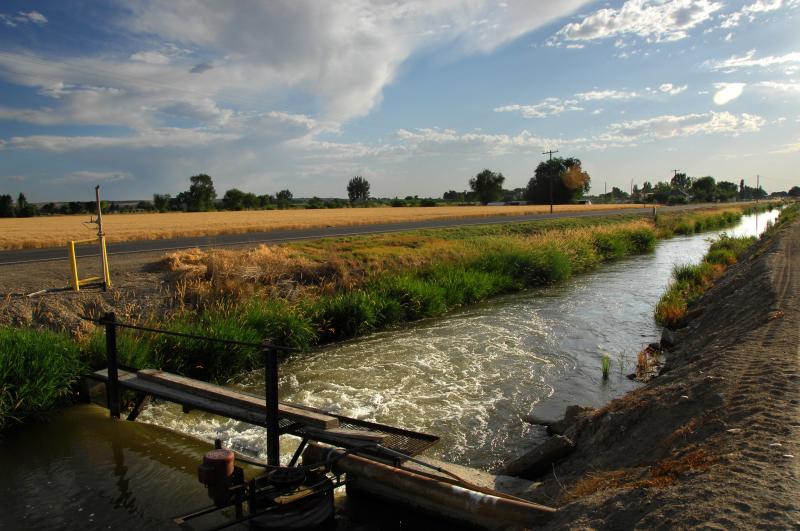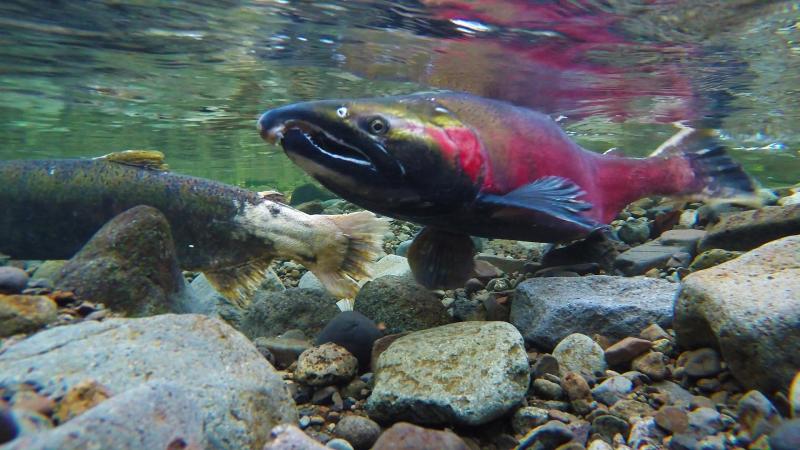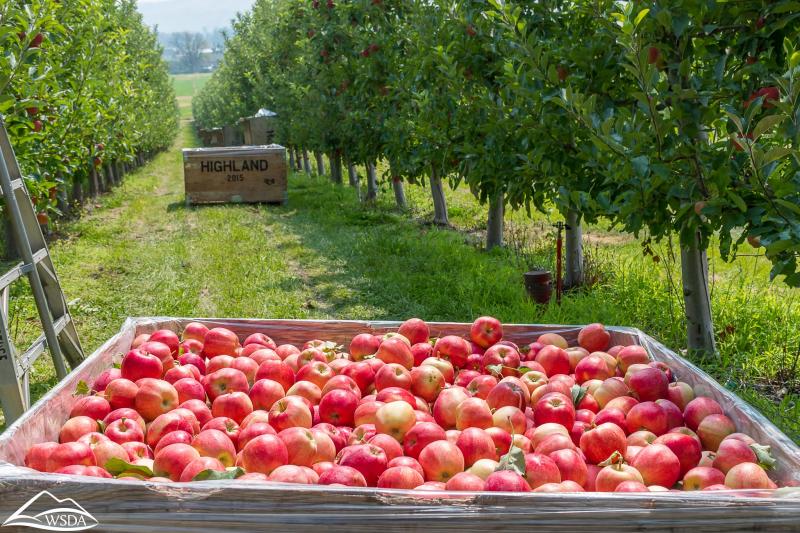Natural Resource Economy
The Northwest’s natural resources include coastal fisheries, Douglas fir plantations, vineyards, semiarid rangelands, and dryland and irrigated farms. The region is the Nation’s top producer of 28 different agricultural products. It is also one of the leading producers of timber products, and is known for its salmon and shellfish fisheries. Estimates for 2015 show the agriculture, forestry, and fisheries sectors accounted for over 700,000 jobs and almost $140 billion in sales. These economic benefits are particularly important in rural and tribal communities whose income base is largely dependent on natural resource economies and supporting industries.
Outdoor recreation is another important contributor to local economies. One estimate indicates the region’s outdoor recreation economy generates more than $50 billion in consumer spending each year and provides more than 450,000 jobs.
Impacts on Outdoor Recreation, Timber, and Fisheries
Income generated from outdoor activities can be reduced by climate variability and change. Lower water in rivers, warmer streams, less snowfall, and loss of forests have negative impacts on this sector as fewer people participate in outdoor activities when conditions are less than ideal. For instance, impacts on the snow skiing industry were especially obvious during the warm winter of 2015, when snowpack was at record lows.
In Northwest forests, tree mortality driven by wildfires, insects, and disease have been more prevalent over the last two decades due to drought conditions and increased temperatures. Some forests in the region may benefit from a combination of increased CO2 and a longer growing season, while others will decrease due to reduced availability of summer moisture. Timber managers are adjusting by shortening rotation rates, reducing investment in some areas, and changing planted species.
The region depends on forestry as an important driver of their economy. Trees are harvested by the logging industry. Logs are processed into wood products at sawmills, and then transported across the nation for use as building materials. As forests change in response to higher temperatures and changing precipitation, people who work as loggers, in sawmills, for transport companies, and in the construction trades may see impacts to their jobs.
Commercial fisheries are also sensitive to climate variability. River temperatures increase during warm and dry years, resulting in fish kills of migrating and spawning salmon. These fish kills have consequences several years in the future. In July of 2015, high water temperatures in the lower Columbia River led to a high rate of mortality for endangered sockeye and threatened Chinook salmon. The triple threat of ocean warming, acidification, and harmful algal blooms could result in serious damage to the Northwest’s coastal fisheries, including the commercial and subsistence shellfish industries.
As the ocean warms, some marine species may shift as far north as the Bering Sea. This could open up new fishing opportunities in the Northwest. As the marine ecosystems respond to climate change, some species will be able to flourish while others will decline. How the shifting resources will be managed and how existing fishing rights and allocations will change over time is currently not known.
Impacts on Agriculture
Shifts in timing of water supply, resulting from earlier snowmelt and declining summer stream flows, may limit the availability of irrigation during some periods. Planning studies for Northwest reservoirs suggest a significant increased need for reservoir storage to meet future summer irrigation demands
Specialty crops, including apples and other tree fruits, are already experiencing changes. Higher spring temperatures have led to earlier flowering. This can lead to a mismatch with the availability of pollinators required for flowers to become fruit, reducing yields. Additionally, summer heat stress can sunburn apples and berry crops, decreasing fruit quality and the farmers’ selling price. Heat stress can also decrease livestock health and increase problems with parasites.
Warmer and drier summers are also likely to reduce the quality and amount of forage available for grazing livestock. Farmers may need to buy additional feed or wait longer for their livestock to put on weight, which affects the total price they receive per animal.
Challenges and Opportunities
As the region warms, the range of crops that can grow in the Northwest are expected to change. To remain in business, food producers will need cost-effective approaches that help them adapt to new conditions or transition to new crops. For example, Northwest wine producers may see warming as an opportunity for growing higher quality and higher-value wine grape varietals, but changes in available water supplies may limit irrigation, requiring water storage or alternative water sources. Over the longer term, changes to average growing season temperatures and the number of severe hot days are projected to reduce premium wine grape production in the Northwest.
Over the long term, wildfires, insect infestations, disease epidemics, and drought-induced dieback of Northwest forests are projected to fundamentally alter forest composition and land cover. Forest management adaptation strategies are being developed, including strategies that address drought-related risks, improve the reliability of forest transportation infrastructure, and protect forest-related ecosystem services.
What’s being done to adapt to new climate conditions?
Despite the many strategies for reducing risks, the ability to adapt to new conditions is not uniform across the natural resource sector. Each industry must face its own challenges.
- Vulnerability assessments and adaptation plans have been completed, or are in progress, for almost every National Forest and Park in the region. Learn how the National Park Service is responding to climage change »
- Marine and ocean environments of the Northwest are projected to continue to change gradually in response to climate change, but the full extent of the potential effects on fisheries is not yet well understood. Active research in this area may provide solutions.
- In the near term, the fisheries industry can use existing strategies such as limited fishing seasons, quota systems, and aquaculture to maintain species abundance, avoid extinction, or increase harvests. In the longer term, alternative management systems are likely to be needed.
This text excerpted and abridged from the report Climate Change Impacts in the United States: The Fourth National Climate Assessment (Chapter 24: Northwest).





